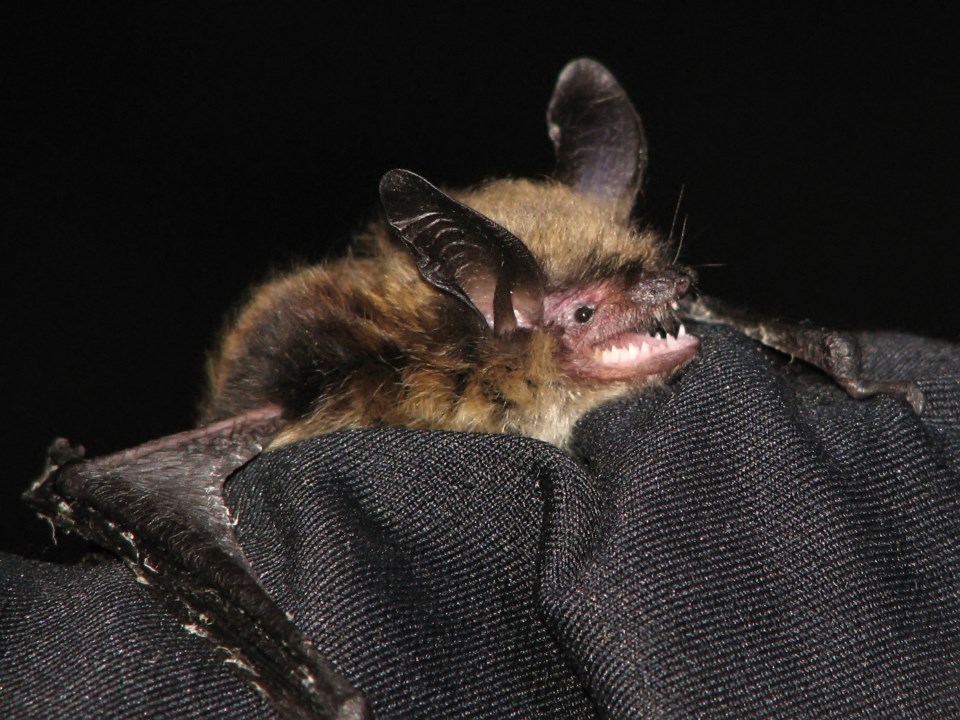Many of us are in the dark about bats, and their survival depends on our enlightenment. Because bats are active at night, it’s hard to get a feel for how many of them are out there. The Whistler Biodiversity Project has so far documented eight species of bats in Whistler, but we don’t know a lot about how many individuals there are or where they hang out during the day or hibernate over winter.
What we do know is that bats are incredibly useful to humans. Bats in Whistler (and Canada) are insectivores (insect eaters) and consume pests of forests, crops, and humans, saving billions of dollars on control. Consider that a little brown bat in Whistler can eat as many as 600 mosquitoes per hour.
How do bats catch so many insects? Bats can see as well as humans can, but they have evolved a method of using sound that enables them to navigate and find food in the dark, called echolocation. Bats produce echolocation by emitting high-frequency sound pulses through their mouth or nose and listening to the echo. This sophisticated hunting technique inspired humans to develop sonar, radar, and ultrasound. To experience echolocation yourself, the Whistler library has two new “Bat Packs” available to borrow, complete with an echolocation bat detector.
Surprisingly, bats are more closely related to primates and humans than they are to mice or rats. Unlike mice, bats live long lives (20 to 30 years in the wild); do not chew (don’t need to worry about bats damaging your home); bats roost instead of nest (they don’t carry anything into where they rest or sleep); and bats won’t force their way in (they will not use a roost if there is no access). If you have bats on your property, we encourage you to live with them or exclude bats in a way that doesn’t harm them. Visit bcbats.ca for more information.
You may have heard of white-nose syndrome, the result of a European fungus that is killing millions of bats in North America. Unfortunately, the fungus that causes white-nose syndrome was confirmed in the Grand Forks area in April of this year, the first time it has been recorded in B.C.
The Whistler Naturalists are part of a citizen science program through the Community Bat Programs of B.C. Here are some of their recommendations on what we can do to help bats survive:
• Report dead bats from now until May 31 to help understand where white-nose syndrome is in B.C. Remember to never touch a dead bat with your bare hands.
• Report where you see bats roosting. This could be on your property, on branches, in rock crevasses or under bark on an old dead tree.
• Consider joining the Naturalists for the B.C. Annual Bat Count this summer to help monitor bat populations.
• Keep your cats inside or on a leash. Bats only have one pup per year and breeding season has now started. Cats are the No. 1 predators of bats.
• Find out more about bats and the Community Bat Programs of B.C. at bcbats.ca. Please email [email protected] if you’re interested in getting involved.
Naturespeak is prepared by the Whistler Naturalists. To learn more about Whistler’s natural world, go to whistlernaturalists.ca




